
in Fethard, Co. Tipperary, Ireland (wikipedia.org)
It is possible that there is a goddess origin to Sheela na Gigs as the matriarchal aspect of our cultural heritage is covered over or integrated into modern religion. It could be argued that the sheela contains the three aspects of the goddess: vulva [maiden], breasts [mother], old face, ribs [crone]. It seems that the phrase sheela-na-gig has Gaelic origins. This phrase was repeated and written down from oral origins. The sounds tended towards similarity with the name Sheila - so was hyphenated accordingly. One Gaelic interpretation is 'Síle na gCíoch' - Sheila of the Breasts. However, the sounds may have been distorted more than we think. For example, sheela-na-gig could have been written down with a different hyphenation as 'shee-la-na-gig'. Considering a 'sidhe' was a supernatural being (as in 'banshee') it could have been originally 'sidhe na gealaí', the moon goddess which could easily simplify as sheela-na-gig, especially if the Gaelic version of the word was repeated over many years and then taken up by Anglophones who knew little Irish and were not sure of its Gaelic pronunciation or origins. The Irish for moon, 'gealach', comes 'from Gala or Galata the original moon-mother of the Gaelic and Gaulish tribes' [see Barbara Walker, The Women's Encyclopedia of Myths and Secrets, p.670].
What are Sheela na Gigs ?
Sheela na Gigs (or Sheela-na-Gigs) are figurative carvings of naked women displaying an exaggerated vulva. They are found on churches, castles and other buildings, particularly in Ireland and Britain, sometimes together with male figures. [...] The name was first published in the Proceedings of the Royal Irish Academy 1840-44, as a local name for a carving once present on a church gable wall in Rochestown, County Tipperary, Ireland; the name was also recorded in 1840 by John O'Donovan, an official of the Ordnance Survey of Ireland, referring to a figure on a church in Kiltinane, County Tipperary. There is controversy regarding the origin and meaning of the name, as the name is not directly translatable into Irish. Alternative spellings of "Sheela" may sometimes be encountered; they include Sheila, Síle and Síla.
http://en.wikipedia.org/wiki/Sheela-na-gig
Sheelas and folk religion
The overwhelming impression one gets from the enquiry into medieval motherhood is that women all over Europe sought the assistance of magical means in their hour of need, and that they continued to do so well into modern times. [...] The cavernous oval-shaped vulva, pointed to or held open by her hands, often shownas swollen or sagging, mostly pointing downwards, and in some cases so big as to reach the ground, finds a perfect explanation: it express the physical state pregnant women craved and worked for. It shows the desirable degree of dilation of the cervix immediately before, during or after childbirth. [...] A further morphological Sheela feature which makes a lot of sense in the light of the present argument is the posture. Whether standing, squatting, kneeling or seated, Sheelas are portrayed in the 'vertical' birth-giving pose.
Barbara Freitag Sheela-na-Gigs: Unravelling an Enigma (p87-8)
Sheela na gigs and the Church
In Ireland most Sheelas remained undetected by the Ordnance Survey teams, which would indicate that the country people preferred to keep them secret. [...] A more determined effort was required from the people of Dunmanway in Co. Cork. Windele observes that when the Sheela there was 'brought out occasionally for charms: the priest twice attacked it, but the people concealed it'. Finally, the fact that many Sheelas were buried in graveyards or concealed in walls or gate pillars stresses the esteem in which the people held them and how unwilling they were to obey the Church's order to destroy the figures. That these orders came from the higher echelons of the Church's hierarchy is documented by Patrick Corish, a retired professor of History from Maynooth College. 'In 1631 provincial statutes for Tuam order parish priests to hide away, and to note where they are hidden away, what are described in the veiled obscurity of Latin as imagines obesae et aspectui ingratae - in the vernacular, sheelanagigs.' As pointed out by Corish, Sheela-na-gigs were not the only reason for Episcopal concern. Pilgrimages to holy wells and trees, traditional wakes and funerals and other time-honoured practices redolent of 'the old religion' were further occurrences the bishops wished to eradicate.
Barbara Freitag Sheela-na-Gigs: Unravelling an Enigma (p68-9)
The med-wyf (wisewoman)
Nevertheless, for many centuries the rural areas remained largely free of the officious, interfering, commercial doctors with their leeches and lancets, which usually did more harm than good. Defying the disapproval of parish priests, people continued to take their illnesses and injuries to the village wisewomen, many of whom possessed time-tested knowledge of soothing herbs, anti-inflammatory and antipyretic drugs, practical dentistry and surgery, bonesetting, purging, hypnosis, massage, and other techniques for easing human pains, handed down from prehistoric times by the sacred sisterhoods of the med-wyf (wisewoman).
Barbara Walker The Crone (p128)
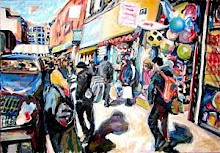

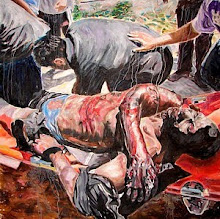





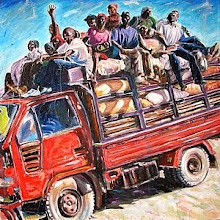

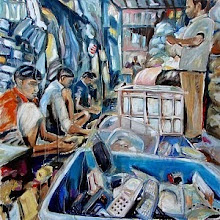

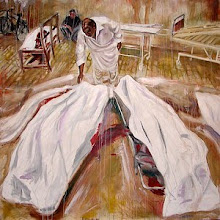

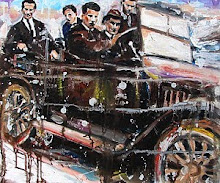
No comments:
Post a Comment